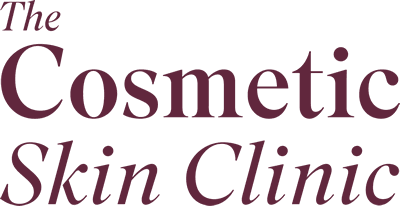The Beauty Memo: Thinking of getting some ‘work’ done? These are the questions to ask your doctor
Net-a-porter.com
May 2021
Luxury fashion retailer Net-a-Porter rounds up the latest beauty trends in its weekly ‘Beauty Memo’ feature. This week, their beauty director Newby Hands chats to Dr Tracy Mountford for “the expert lowdown” on what to ask your cosmetic doctor when seeking a refreshing new treatment. With “appointments at cosmetic clinics now as sought after” as getting a hair appointment post-lockdown, it is essential to ask the right questions. This will help you select a flattering treatment that addresses your beauty needs rather than what you think you need, as these things are “not necessarily” always the same.
Keep an Open Mind
This is why Dr Tracy Mountford encourages patients to directly ask their cosmetic doctors what they feel would be the best treatment to rejuvenate and uplift the face. She advised that in most cases, it is probably “unlikely to be the hot new treatment” that everyone seems to be talking about or the one that “your best friend / celebrity has raved about.” She elaborates:
“People can be very blinkered in what they think they want, or reactive to the latest thing they have read about, and it’s the job of a good doctor to assess what they really need. Often, someone books in for something specific,” such as anti-wrinkle treatments, “but what they ultimately have is not what they originally came in for.”
This is because her team is expertly trained to assess every patient’s skin needs on a bespoke level to maximise visible results through various methods, not just one. She adds:
“It’s about “having a very open mind and a broad discussion. Then, it’s my job to give them a plan on how to achieve what they are looking for.”
Choose a proper consultation
Patients need to receive an honest consultation where good communication between the patient and practitioner is key. Dr Mountford takes time to prioritise detailed consultation appointments that are built around trust and results. She explains:
“You put the time in to discuss what a patient wants – and how the doctor feels that’s best achieved. You need to look at the face – and assess it from every angle. It’s about building up trust because the best results come from a long-term relationship.”
It also pays to enhance your look with the same clinician once you have built this trust, as seeing someone else for a “touch-up of filler” can actually make a person’s face look unbalanced or “slightly off.” So if you have found a good person, stick with them and communicate your needs and wishes so that they can devise and deliver a plan that generates long-term results. Chopping and changing practitioners can leave you with a sub-optimal look.
Have a long-term plan
Improving your appearance does take its time, even when “quick-fix” solutions like dermal fillers and anti-wrinkle injections are used. It is, therefore, better to think about cosmetic self-improvement as a long-term game with different stages involved. She comments:
“We have the quick fixes, like Botox and some strategic filler that you can maintain as and when needed. But when you’re tackling something like pigmentation or skin firmness, then you need to think long-term and invest in a rollout of ultrasound and laser treatments that will treat collagen and skin quality over time.”
With these types of skin-boosting treatments that stimulate the body’s own natural cell renewal, it can often take one to three months before you notice any visible results. Faces also “change over time and age differently,” so you may need a different plan completely two years down the line than you had when starting out. This is why Tracy works with her own patients to “fine-tune and reassess” results over time.
Choose clinically proven treatments
No matter how tempting it can be, it is vital for cosmetic patients not to cut corners. Only stick to “tried-and-tested treatments that safely deliver” results. At The Cosmetic Skin Clinic, for example, Dr Mountford uses a range of advanced technologies for skin firming and rejuvenation which have been officially approved by the FDA:
“These are the mainstay of excellent medicine and you want to ensure any clinic is offering them all. There’s no one miracle that does it all, and most people need a menu of treatments to get the best outcome,” says Dr Mountford.
The wealth of choice can sometimes be overwhelming, but a trained practitioner will always know which FDA-approved treatment is best for your own individual needs after they have deeply assessed your face:
“There are the injectables, the toxins and the fillers; plus lasers, to treat the skin and the skin surface, and ultrasound and radio-frequency (often combined with needling) machines, which work deeper to repair damage and boost collagen for the future. With these, we can work deeper or more superficially on the skin – whatever is needed. And we know they work.”
In terms of her fundamental top tip for cosmetic treatments, Dr Mountford concludes with wise words that reflect her years of experience in the field:
“Don’t be swayed by what sounds very ‘of the moment’ – and never be the first person to be treated with something completely new.” Follow these top tips and you will be on the right path for achieving excellent cosmetic results.
To find out more about the range of FDA-approved treatments on offer at The Cosmetic Skin Clinic, fill out our online enquiry form. You can also contact our London and Buckinghamshire clinics directly on 0308 284 655 (London and Bucks).














